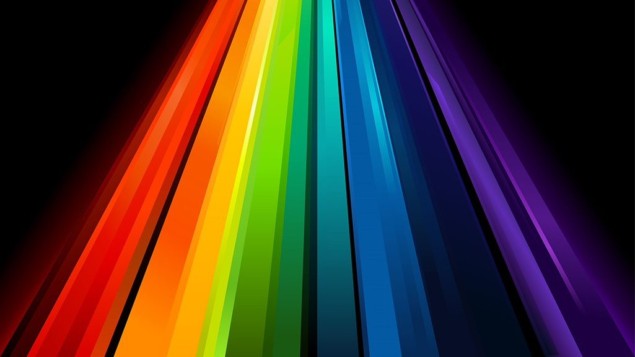
A solid state electronic device array that produces time-modulated light at tuneable wavelengths has been unveiled by researchers in the US. Possible uses of the device include compressive spectroscopy, which is much easier to perform outside the laboratory than conventional spectroscopy.
Traditionally, devices such as optical spectrometers use a single, broadband light source to illuminate a sample before using diffraction gratings or other optical devices to measure the light emitted or absorbed as a function of its wavelength. Scaling this down to the microscale is possible using techniques such as colloidal quantum dot filters, but these require a suitably broadband light source. Also, these are passive detectors, which means that they produce a signal that can be difficult to separate from ambient light.
An alternative approach, which obviates the need for a spectrally-sensitive measurement, is to vary the wavelength of the illuminating light.
Vivian Wang of University of California, Berkeley, explains the principle: “Let’s say you have an apple or something that looks a certain colour to your eye: how do you characterize that quantitatively? You could shine a source containing a very broad range of wavelengths onto the object and then measure the wavelengths coming back out using a spectrometer, or you could shine different colours of light onto the object and then just measure the total light reflected back out onto a single point detector for each of those colours.”
Lock-in detection
One advantage of the latter approach is that the wavelength and/or the intensity of the incident radiation can be modulated at a controlled frequency, so the signal in the detected light is easy to separate from noise. “When you have something that is intrinsically pulsed, you can detect the light emission using something called lock-in detection,” explains Wang.
Fabricating multiple LEDs on the same chip can be difficult or even impossible, which would limit the number of different wavelengths that could be included. In 2020, however, Wang and UC Berkeley colleagues led by Ali Javey had made a surprising discovery.
“We had been playing around with two-dimensional semiconducting materials and we found that, when we put them on top of capacitors on silicon wafers, they emit light by the electrical excitation,” says Wang. “We found that we can also get electrically driven emission from other materials using pulse-driven capacitors…The reason this works is really complicated and is described in some of our previous papers.”
Now, the team has taken this innovation an important step towards a real engineering application. They mounted a grid of conductive carbon nanotube networks, each with its own current input, on top of a layer of silicon dioxide, which was in turn laid on a layer of doped silicon. Onto these carbon nanotube networks they deposited 49 different electroluminescent materials, ranging from cadmium selenide quantum dots to the active materials in organic LEDs. When they connected the chip to an alternating current power supply, they could produce multicoloured light with tunable wavelengths, because charging any individual capacitor would cause the emitter on top to light up.
Compressive computer algorithm
“If we want to create different combinations of light we can turn on different combinations of devices at the same time,” says Wang. The researchers then use a compressive computer algorithm to estimate the full reflection spectrum based on the information given by the reflections of each pulse.
In addition to spectroscopy, the researchers say the device has potential applications in other areas such as microscopy. The team is now working to make their array commercially viable.

Imaging spectrometer slims down
“We’ve demonstrated some interesting possibilities for this device structure, like making new examples of spectral measurement, but right now we’re trying to improve the performance of these devices – like the brightness, efficiency and stability,” says Wang.
The array is described in a paper in Science Advances.
“This is a very interesting paper and potentially a very important one,” says Zongfu Yu of the University of Wisconsin-Madison; “They solve some of the problems of the traditional method [of spectral sensing] where a bulky instrument is needed as a tuneable light source. Yu and a colleague initially proposed the idea for compressive sensing back in 2014: “It generated tremendous interest from industry, but we had no idea how we would realise the light source at the time,” he says; “Later on we did some work with a fixed light source using filters, but before I read this paper yesterday, I had no idea how people could realise a tuneable light source with so diverse a spectral range.”
